A newly laid egg needs to be incubated (kept warm) at a constant temperature of about 40°C during the gestation period. The hen will do this naturally if she has gone 'broody', or a specially made incubator can be used. The developing embryo (the chick) feeds on the eggs yolk through a series of blood vessels. This is why an egg is so good and nutritious for you to eat.
Growing embryos need oxygen and give off carbon dioxide. The method of gas exchange does not have to be sophisticated as natural convection with hot air rising, removing the carbon dioxide through air holes in the top of the machine, drawing in oxygen from below, works well. Some incubators are fan assisted both to even out the air temperature and facilitate the entry of oxygen.
Turning eggs when they are incubating is vital so that the egg is incubated evenly and the embryo does not get stuck to the shell membrane. How many times a day are necessary? It has been proven that more turning equals better hatching. This can be carried out automatically, but a minimum of five times a day is recommended if turning by hand. Some incubators are semi-automatic which means you push a lever, turning the eggs on a grid. This is preferable to handling each egg, losing temperature and possibly introducing all sorts of undesirable bacteria from your hands. Other incubators are fully automatic, and have processes which turn the eggs continuously.
Throughout the incubation process, the egg has to lose weight in order to hatch. This sounds the wrong way round with the embryo growing inside the egg, but the weight of the about-to-hatch egg needs to be 13% less than a fresh egg to allow room for the chick to break the shell open with its egg tooth. If there has been too much humidity up to the time of pipping (the first exciting triangular upheaval at the broad end of the egg) the chick is too large, sticky, and cannot position itself in the right place at the broad end. Result: dead in shell.
Most small incubators do not have hydrometers in order to measure humidity. The expense of an accurate one rules this out. What they do have is a receptacle for putting water in, and a method of air flow to remove excess humidity. There is little point in adding water at the start of incubation when it is pouring with rain outside and the eggs are fresh, both circumstances contributing to high humidity. This is where the art of incubation comes in, as it is important to alter the humidity regulation to suit the climatic conditions. The odd hot and dry summer we have enjoyed in the UK meant there was a need to put water in at the start of incubation, for instance, but in normal British damp weather it is more of a problem keeping humidity down.
Positioning of the incubator in a room where the temperature does not fluctuate either up (sun through a window?) or down too greatly will help the machine maintain accuracy on temperature. The careless removal of the electric plug and it’s non-return is an avoidable danger, whereas the effect of power cuts can be minimised by covering the machine with a blanket until the power returns. Eggs will tolerate short periods of low temperature, but are quickly killed by high temperatures. The humidity must be as high as possible at hatching in order to keep the membrane under the shell moist and therefore easy for the chick to split it open. At twenty days for the chickens the humidity needs to be 80%.
The candling of eggs is a good way to see how successfully you are progressing. It originated by the holding of an egg in front of a candle in order to see through the shell, and the same principle, albeit with slightly more sophisticated equipment, still holds true, but a small bright torch held to the broad end of the egg in a dark room will reveal the contents. Practice on white shelled eggs as it is very easy to see exactly how the embryo is developing. Remember that the eggs are losing heat while you are marvelling at the life inside. The development of the air space will tell you if the humidity is correct, and of course you will be able to discard those eggs which for one reason or another have either stopped developing or are fertile. Candling three times during hen egg incubation is normal practice.
This is also important from the cleaning aspect, as the bacteria produced at hatching can infect eggs which are not ready to hatch. It is better to either have an all-in, all-out system or use two incubators, one as a setter and the other as a hatcher which can then be sterilised before the next hatch. A suitable disinfectant* for cleaning incubators as it controls all the known families of bacteria and viruses but is not toxic either to the operator of the eggs. Incubators should be cleaned between each hatch.
* For a list of DEFRA approved disinfectants, see Annex ‘N’ of ‘Code of practice for Lion eggs’ V.7 issued on 30/11/13 by The British Egg Industry Council’.



